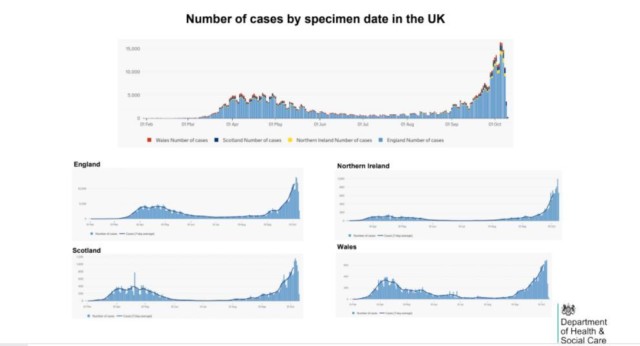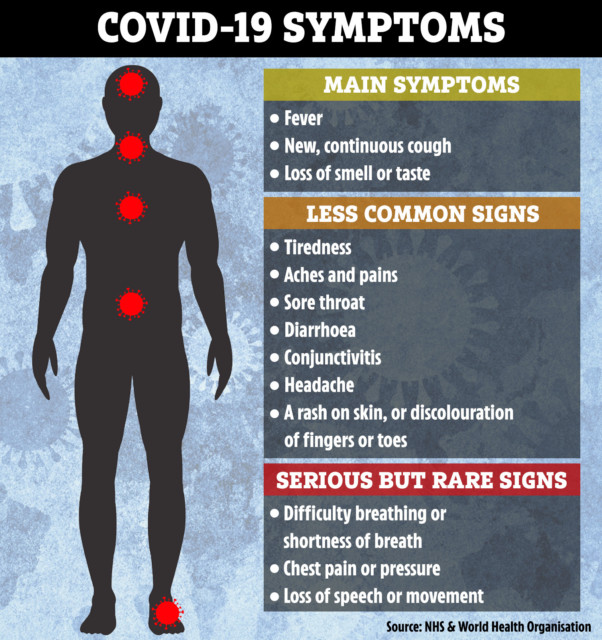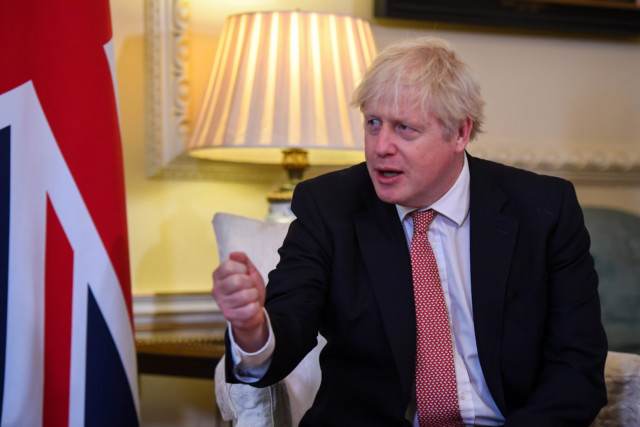MANCHESTER faces a ban on households mixing – but will reportedly avoid a full lockdown – with Boris Johnson preparing to confirm details of the tier system today.
The PM will today unveil his detailed “three-tier” plan and is likely to place some areas under stricter lockdown measures as the UK enters the next phase of the pandemic.
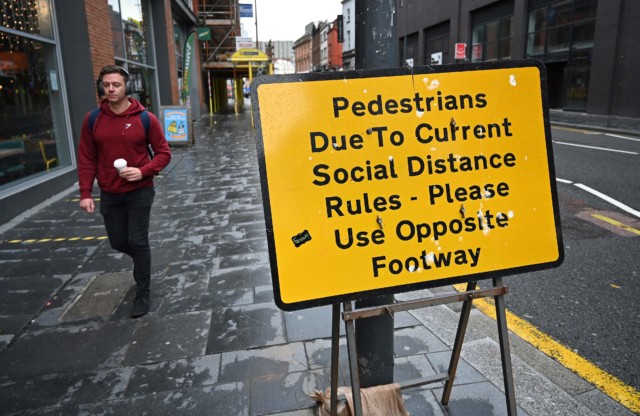
Matt Hancock has today been briefing local leaders over the new restrictions – with Greater Manchester told to expect to be put on Tier 2 lockdown with Oldham to be brought into line with the regulations after being under enhanced lockdown.
Jim McMahon, Oldham West and Royton MP, said: “Call with the Secretary of State confirms Greater Manchester will be placed in Tier 2 with household restrictions on meeting indoors in any setting, but not outdoors Pubs serving food remain open Oldham will be removed from its enhanced lockdown measures and brought into line with Greater Manchester at last.”
Merseyside MPs were also reportedly told by the Health Secretary that all bars and pubs would be closed in Liverpool – but restaurants would remain open for now.
Gyms and betting shops will also be closed as part of the desperate attempt to stop the rising cases of coronavirus. Legal restrictions on indoor house mixing, as well as guidance on travel restrictions, are also expected to be announced.
It comes amid reports that London could be placed into a Tier Two lockdown – meaning a ban on households mixing.
And one senior Conservative has said the British people need to “brace, brace” as the new rules will be “hard to stomach”.
It comes as…
- Nightingales across the North are on standby as hospitals are four weeks off levels seen at the peak of virus
- A senior Tory warned things may still get “sh****r yet” with Britain back to where we were in March
- Overnight stays will be forbidden in northern virus hotspots for four weeks
- Residents can only leave the highest risk regions for essential travel such as work, education or health reasons, and must return that day
- A “tiers for fears” system will be brought in to avoid triggering a full lockdown
- Most AS, A levels and GCSEs will be held three weeks later to help soften the blow of the pandemic’s disruption
- The number of coronavirus patients in hospital is higher now than when the whole country was put into lockdown in March
The politician described the next phase as going to be “sh”, but warned that it “may get sh****r yet”.
Last night the PM told the Cabinet the nation stands at a “critical juncture” and more must be done to avoid triggering full lockdowns.
Under the tier system, areas with the highest infection rates will face Tier Three restrictions – a full lockdown, with a ban on different households meeting.
Tier 2 will mean a ban on different households mixing while tier 1 – which means less than 100 cases per 100,000 – will bring follow social distancing measures and the rule of six.
Nightingales across the North are now on standby as hospitals are four weeks off levels seen at the peak of virus, doctors have warned.
Knowsley and Liverpool, two of the affected areas, are in the top three for infection rates in England – at 669.5 per 100,000 people and 598.5 respectively.
Speaking at a press briefing today, NHS England boss Professor Stephen Powis said Nightingales Manchester, Sunderland and Harrogate have been asked to prepare to take patients.
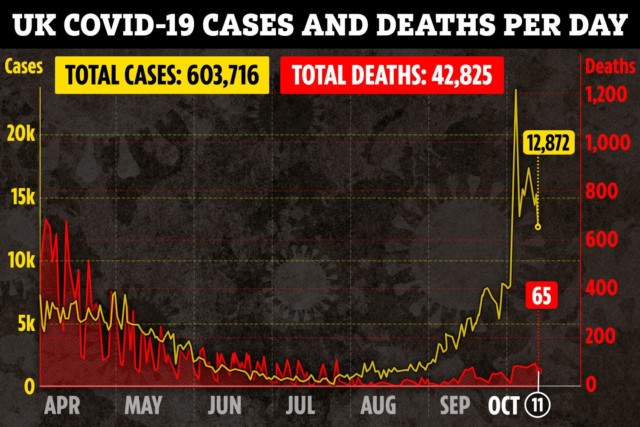
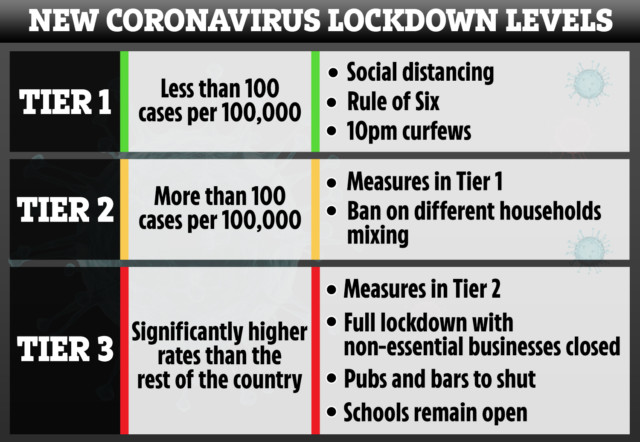
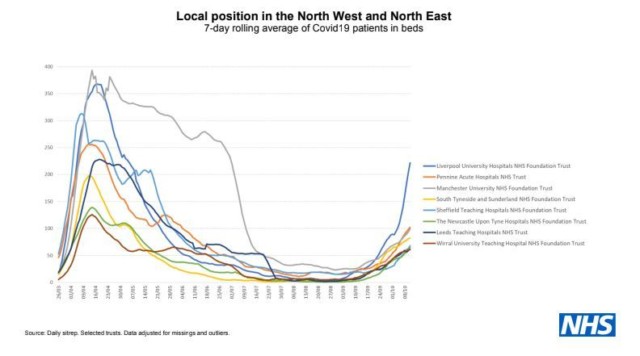
Meanwhile, leaders of Newcastle City Council have said it’s “unlikely” that any further restrictions will apply in the North East.
Residents have already been told not to socialise with other people outside of their own households, with hospitality for food and drink restricted to table service only.
Leisure and entertainment venues were also required to close between 10pm to 5am.
Leader of Newcastle City Council Nick Forbes tweeted: “I’m pleased that, for now, it’s unlikely any further restrictions will apply in the North East.
“We need a period of stability and consistent rules, so everyone is clear what we all need to do.”
Meanwhile Lisa Nany tweeted: “Just learnt Greater Manchester will be placed into tier 2 restrictions via twitter.
“Apparently there was a government briefing for GM MPs but I can’t provide details because I wasn’t invited. I suspect this is because they don’t know where Wigan is. What an absolute shambles.”
It comes after deputy chief medical officer Jonathan Van-Tam warned there had been a surge in cases reported across the nation.
Prof Van-Tam said infections of the deadly bug were spreading from younger generations to more vulnerable groups.
“There is the spread from those younger age groups into the 60-plus age group in the North West and the North East, and there are rates of change in the same places but also extending a little further south,” he said.
“And this is again of significant concern, because of course the elderly suffer a much worse course with Covid-19, they are admitted to hospital for longer periods, and they are more difficult to save.”
However, the infection numbers have fallen far short of the doomsday predictions made by Sir Patrick Vallance and Professor Chris Whitty.
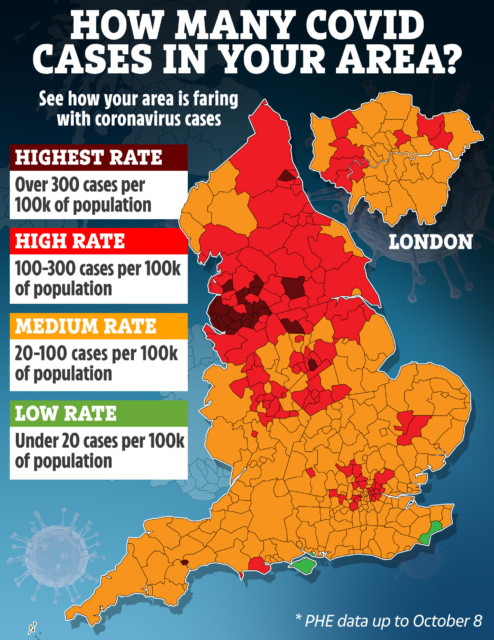
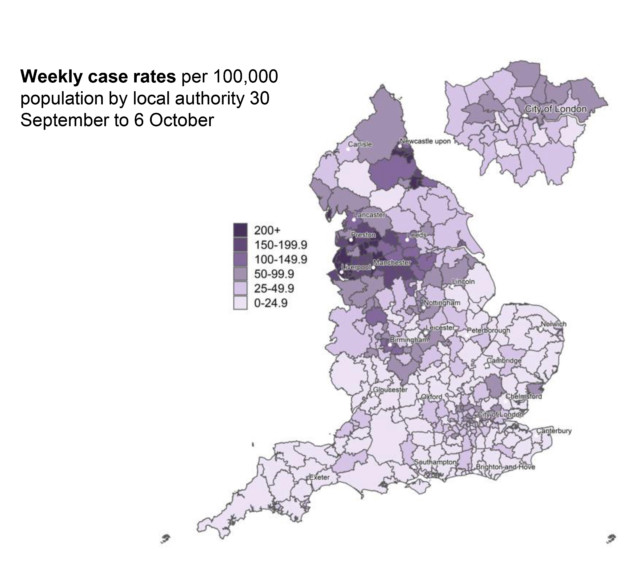
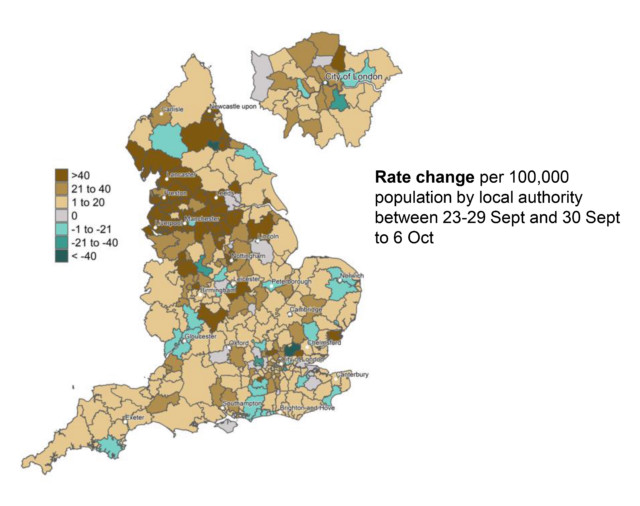
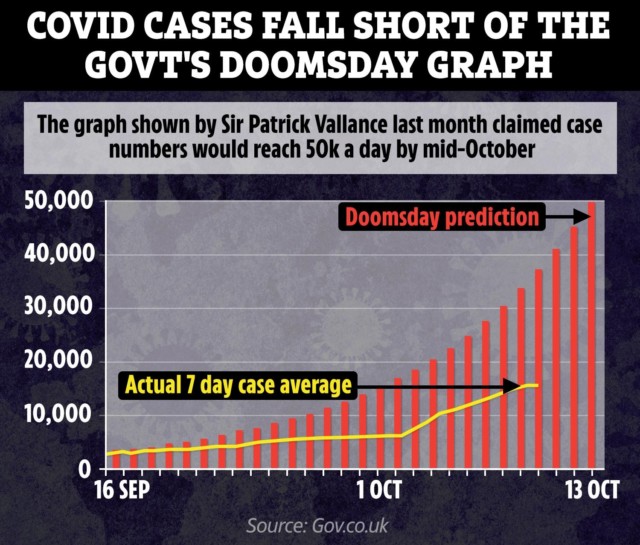
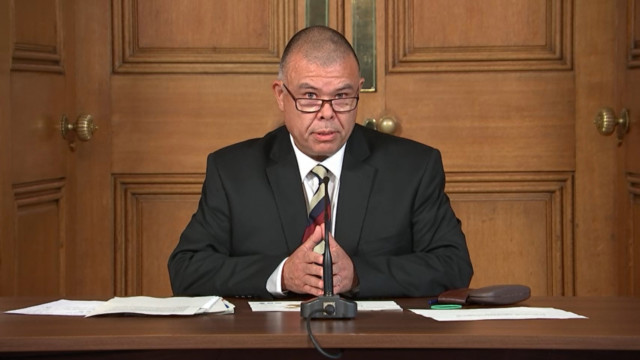
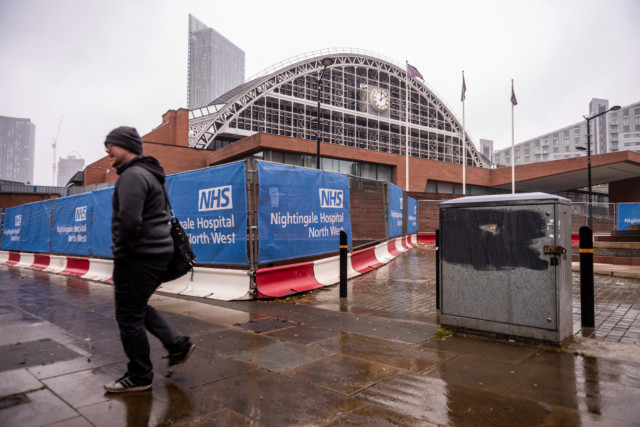
The scientists estimated there would be 50,000 cases reported a day by mid-October in a bleak warning issued on September 22.
Yesterday, official UK statistics showed 12,872 infections have been recorded in 24 hours.
A senior Tory told Politico: “This is the moment where we enter the next phase.
“It’s going to be really hard to stomach, it’s going to go on for some time, and if people don’t follow the rules then we may have to go further still.
“People in all areas of the country should be under no illusion, we are back to where we were in March, this is going to be sh** and it may get sh**** yet.”
Steve Rotheram, mayor of the Liverpool city region, said discussions on new measures expected to be announced today had been going on “all night”.
He told BBC Breakfast he is wants to explain to the two million residents in the city that he has “negotiated on their behalf.
Mr Rotheram said: “But also we wanted some surety from national government that if we hit some of the milestones we can come out of Tier 3 very quickly.”
He said test and trace with “much more local control”, issues around enforcement and “one or two other packages of support” around capacity for local authorities are already “in the bag” but that other details are being worked out.
Mr Rotheram said there is a “sunset clause” after four weeks of restrictions, measuring progress, but the meaning of that is not yet known.
Dr Jane Eddleston, medical lead in Greater Manchester, urged the public to “respect” the virus due to the “extremely serious” consequences it has for some patients.
She told the press briefing: “The North West has about 40 per cent of all Covid cases at the moment and this is proving very challenging for us.
“Within Greater Manchester, we have seen a threefold increase in the number of patients admitted to intensive care in the last five weeks and an eightfold increase in the number of patients admitted to our hospitals.
“The situation at the moment is that 30 per cent of our critical care beds are taken up with patients with Covid and this is starting to impact on the services we provide for other patients.”

